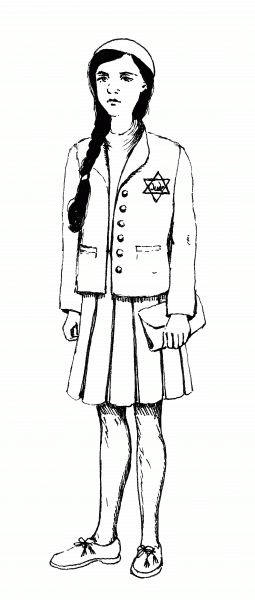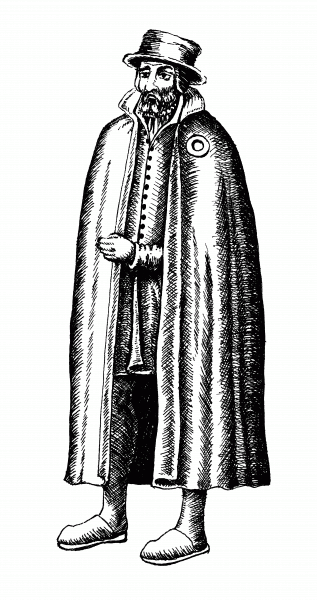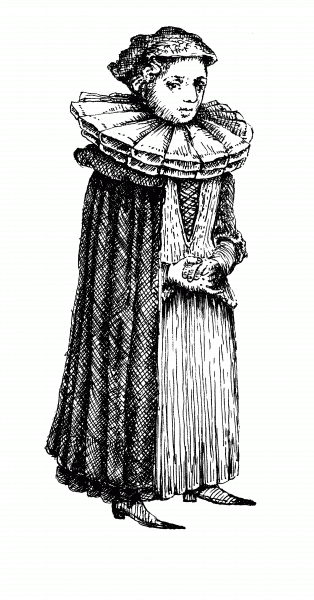Glossary
The entries selection comes from the book “Dictionary of Judaica” (2005), which was written by a group of authors led by Eva Kosáková . Entries were further processed by Jaroslav Kuntoš, Dana Veselská, Olga Sixtová, Michaela Scheibová and Lenka Uličná. The book can be purchased at our e-shop.
Jewish badge
The obligation to clearly distinguish the Jews from the rest of society was first imposed by the Fourth Lateran Council in 1215. Forms of visual differentiation included parts of ordinary garments (e.g., cuffs, collar and ruff) whose colour or size was emphasized or a specific badge. The usual symbol was that of a circular badge; others included the tablets of the Ten Commandments (England), a heart (Germany) and the Greek letter tau (Sicily). The most frequently used colour was yellow, although some badges were green, white or red. Jews in the Czech lands had to wear a white or yellow hat and, from the 14th century onwards, a special cap or hood. In 1551-1670, Jews were marked out by a circular yellow badge with a blank centre, whose precise shape and size were prescribed by a decree of Emperor Ferdinand I. This was followed by a yellow or green frilled collar (ruff), an outdated throwback to Renaissance styles which served to ridicule Jews in public. This form of Jewish badge was not removed until 1750, by Marie Theresa. The next degrading symbol was a yellow strip of cloth or ribbon, which was attached to a garment or head covering. From 1781 until September 1941, Jews in the Czech lands were freed from having to wear the humiliating Jewish badge. Until the end of World War II, however, they had to wear the yellow Star of David with the inscription Jude (Jew) on the left side of their outer garment at chest level.
Back to list


![[subpage-banner/2_pamatkyaexpozice_1.png]](https://c.jewishmuseum.cz/images/subpage-banner/2_pamatkyaexpozice_1.png)



![[design/2013/Twitter.png]](https://c.jewishmuseum.cz/images/design/2013/Twitter.png)
![[design/2013/Instagram.png]](https://c.jewishmuseum.cz/images/design/2013/Instagram.png)

![[homepage-banner/incident.jpeg]](https://c.jewishmuseum.cz/images/homepage-banner/incident.jpeg)